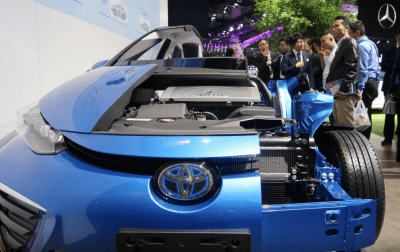Climate change promises to cause untold damage across the world if greenhouse gas emissions continue at current levels for much longer. Despite the wealth of evidence indicating impending doom, governments have done what humans do best, and procrastinated on solving the issue.
However, legislatures around the world are beginning to snap into action. With transportation being a major contributor to greenhouse gas emissions — 16% of the global total in 2016 — measures are being taken to reduce this figure. With electric cars now a viable reality, many governments are planning to ban the sale of internal combustion vehicles in the coming decades.
Similar But Different Measures

Earlier this year, we looked at the city of Brussels, which aims to ban all fossil fuel transport from its city centre by 2035. However, such a heavy-handed measure isn’t necessarily practical worldwide, particularly for those stuck driving older vehicles in areas without strong public transport links. Instead, different states and countries are setting their own timelines on the phase-out of fossil fuel vehicles in an aim to move towards a cleaner transport mix.
One of the fastest-moving is Norway. With electric and hybrid cars making up over 50% of sales since 2017, they’re well placed to complete the transition away from internal combustion. EVs alone made up 41% of new car purchases in 2019. The country plans to reach zero sales of fossil fuel vehicles by 2025, though an outright ban is not yet solidified by law.
Aiming to move somewhat slower but at a far greater scale is China. Their goal is to sell only hybrids, hydrogen vehicles, and electric vehicles by 2035. Now the biggest car market in the world, selling 21.05 million vehicles in 2019, the policy promises to have a major effect on the automotive industry, both domestically and worldwide. With fossil-fuel only cars facing an outright ban on sales in 2035, carmakers have less incentive than ever to continue investing in internal combustion technology, given it will be shutout from such a large potential market base.
China has historical form where such policies are concerned; their bans on motorcycles and then later, electric bikes, were executed ruthlessly quickly in past years. However, the vast country does not stand alone in this push. As is common with automotive regulation, large blocs of countries tend to make similar moves at the same time. This eases pressure on automakers who would otherwise have to deal with wildly varying legislation across markets, and by working together, countries can overcome political resistance from automakers who otherwise might have the resources to stifle dissent in a single smaller nation.
After initially setting a target of 2040 for the phase out, the United Kingdom moved its target up to 2035 and is considering shifting it even sooner to 2030. California has also set 2035 as a goal for all new passenger vehicle sales to be zero-emission, which seems to go so far as to exclude even hybrids. In Canada, Quebec intends to start their ban in 2035 also, with British Columbia outlawing new sales by 2040. A smattering of other European nations are firming up their own plans, too.
Technology To Bridge The Gap

China’s policy, and many others, tend to hedge their bets, aiming to reduce transportation emissions over time without betting the farm on electric vehicles entirely. If battery supplies or range figures don’t get to where they need to be in 15 years time, Chinese drivers will still be able to fall back on hybrids or hydrogen cars. This is particularly reassuring for those who regularly drive long distances and worry about getting stranded in electric cars. Additionally, hydrogen cars and hybrids don’t need users to have a home charger to use their vehicle on a regular basis. They can instead be refuelled in much the same manner as a regular gasoline car. This is important for those who live in city apartments, or other areas where street parking is the only option.
Hybrid and hydrogen technologies promise to take the pain out of the switchover to electric vehicles. They can help ease the average driver through the switchover, and provide a useful option for those people who fit a particular edge case that electric vehicles still can’t quite fulfill.
Transition by New Acquisition

The vast majority of these bans only affect new vehicle sales. Thus, there will be a lag in actually reducing emissions from transportation, as many drive older vehicles that are years or decades old. Estimates suggest it can take up to 18 years for 50% of vehicles on the road to comply with a new law. Thus, it’s unsurprising that most countries have set their targets so far in the future. It will take a long time for the entire second-hand market to switch over to cleaner cars unless outright bans on fossil fuel vehicles come into place. Of course, there’s also the export market to consider; many older vehicles make their way to developing countries. In Uganda, for example, the average vehicle age is over 16 years, with many cars stacking on another two decades of driving after that. Shipping older cars out will help clear local pollution and reach targets faster, but if emissions are to be reduced worldwide, fossil fuel cars eventually need to be taken off the road entirely.
Such measures won’t be enough on their own to stave off the pending climate emergency, but are an important part of reducing global emissions output. With transition timetables now up on the board, it’s up to automakers to take the necessary steps to make it happen. Whether this will be a quick and clean switchover, or a drawn out, painful process akin to switching off analog TV will be borne out in due time.
No comments:
Post a Comment